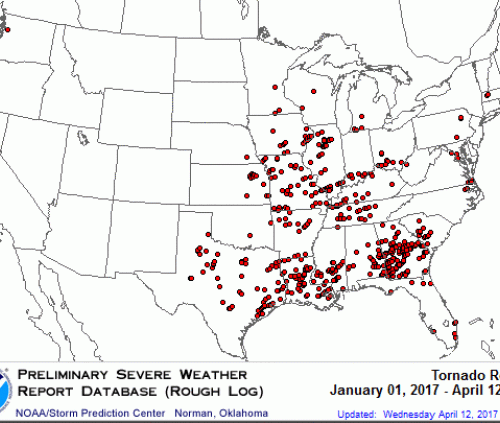The tornado outbreak on Tuesday in South Louisiana resulted from a combination of factors including extremely high humidity and warm water temperatures in the Gulf of Mexico, according to Louisiana State Climatologist Barry Keim.
Having multiple tornadoes in February is unusual for southeastern Louisiana, though not unprecedented, said Keim, who is based at Louisiana State University. He noted that an outbreak of severe tornadoes also hit in late February last year, and pointed to the flooding and record rainfall last August as indications that Louisiana is facing increasing numbers of major weather events.
“We’re definitely in the midst of a rash of severe weather events across the state, for sure,” Keim said. “It’s hard to attribute any event like this directly to global warming. But having said that, there are some things that are somewhat consistent with global warming. Warmer sea surface temperatures add fuel to the fire when a squall line like this rolls in.”
According to Keim, the tornado outbreak was caused by factors including:
– Extremely high humidity driven by warm water temperatures in the Gulf of Mexico. Normal winter humidity is in the 40s or 50s, while humidity readings on Tuesday were close to 69 — similar to summertime levels.
– The moisture was pushed ashore into warmer air, ahead of a trough of low pressure.
– Maritime tropical air from the Gulf added to the instability caused by low pressure and warm temperatures. That meant the air was rising, condensing and falling, and then warming and rising again, creating the wind shear that can contribute to tornadoes.
by Diana Samuels
February 07, 2017 at 8:13 PM, updated February 07, 2017 at 8:16 PM




